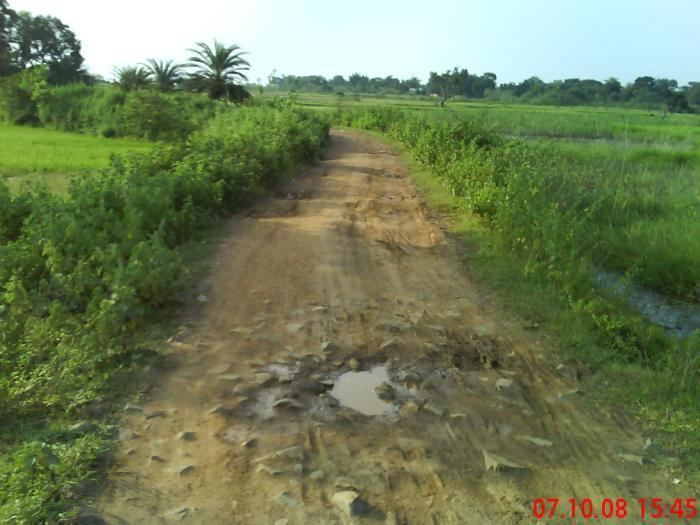Country India Headquarters Jamshedpur Area 3,533 km² Lok sabha constituency Jamshedpur | State Jharkhand Website Official website Administrative division Kolhan division | |
 | ||
Destinations Jamshedpur, Ghatshila, Dalma Wildlife Sanctuary Colleges and Universities XLRI ‑ Xavier School of, MGM Medical College, Women's College, Karim City College, Graduate School College f Points of interest Tata Steel Zoological Park, Dalma Wildlife Sanctuary, Bhatia Park, Sir Dorabji Tata Park, Rankini Mandir Similar Singhbhum district, Kodarma, Ranchi | ||
East Singhbhum( is one of the twenty-four districts of Jharkhand state, India. It was created on 16 January 1990 . More than 50% of the district is covered by dense forests and mountains, where wild animals once roamed freely.
Contents
Map of East Singhbhum, Jharkhand
Geography
The district is bounded on the east by Midnapore district, on the north by Purulia district, both of West Bengal, on the west by West Singhbhum district of Jharkhand state, and on the south by Mayurbhanj district of Odisha.
Economy
East Singhbhum district has a leading position in respect of mining and other industrial activities in Jharkhand state. Jamshedpur, a leading industrial city of India, is the district headquarters. Ghatsila is home to the five decade old Copper Refinery of Hindustan Copper Limited. The Singhbhum Shear Zone, a geological feature lying between river Subarnarekha on North-East and Dhanjauri ranges on South-West houses the mines of Copper and Uranium. Most notable Copper mines are Banalopa, Badia, Pathargora, Dhobni, Kendadih, Rakha and Surda. Out of these only Surda is operational. Surda is currently operated by India Resources Ltd (www.Indiaresources.com.au), an Australian mining company. Important Uranium mines are jadugora, Narwapahar, Bhatin, Turamdih and Baghjanta. Chakulia an important town in the Southeastern part of the district is famous for its Rice Mills, Oil Mills, Washing Soap Factories and Bamboo production. Baharagora is another important town situated on National Highway No. 6.
In 2006 the Ministry of Panchayati Raj named East Singhbhum one of the country's 250 most backward districts (out of a total of 640). It is one of the 21 districts in Jharkhand currently receiving funds from the Backward Regions Grant Fund Programme (BRGF).
Blocks/Mandals
East Singhbhum district consists of 11 Blocks. The following are the list of the Blocks in East Singhbhum district:
Divisions
There are six Vidhan Sabha constituencies in this district: Baharagora, Ghatsila, Potka, Jugsalai, Jamshedpur East and Jamshedpur West. All of these are part of Jamshedpur Lok Sabha constituency.
Culture
Along with Santhali , Bengali, Odia and Hindi are the major languages spoken here. The most prominent festivals of the place are Durga Puja, Basant Panchami, Makar Sankranti, Sohrai and Diwali.
One tourist attraction is Chitreshwar temple situated in Chitreshwar village in Baharagora Block 12 km from Baharagora. The temple is said to be one of the largest natural Shiva linga. Lots of devotees of Shiva come daily. Chitreshwar temple is believed to have the largest Shiva linga after ligaraja shiva linga in Bhubneshwar. It has another temple called Bhuteshwar which is in Baharagora Block. Ghatsila a famous tourist spot is also located in the district which was once inhabited by renowned Bengali poet Bibhuti Bhushan Bandyopadhyay. Rankini Temple located near the mining town of Jadugora is also worth mentioning. Goddess Rankini is held in high esteem and worshiped by the tribal and non tribal people inhabiting the district.
Demographics
According to the 2011 census East Singhbhum district has a population of 2,291,032, roughly equal to the nation of Latvia or the US state of New Mexico. This gives it a ranking of 199th in India (out of a total of 640). The district has a population density of 648 inhabitants per square kilometre (1,680/sq mi) . Its population growth rate over the decade 2001-2011 was 15.53%. Purbi Singhbhum has a sex ratio of 949 females for every 1000 males, and a literacy rate of 76.13%.
